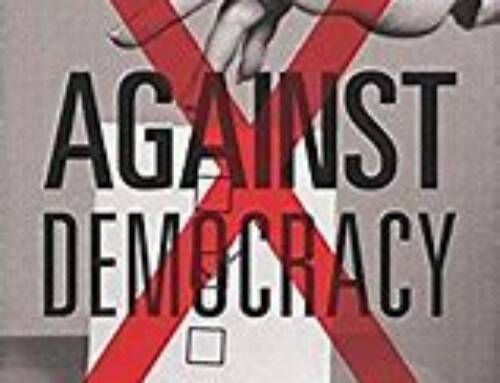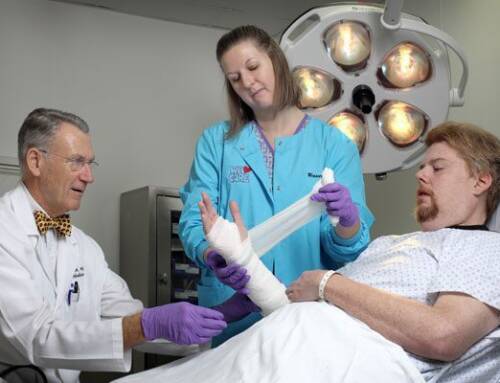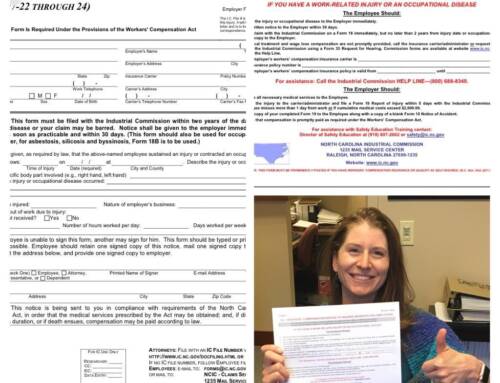Today’s post comes from guest author Paul J. McAndrew, Jr. from Paul McAndrew Law Firm via our colleagues at insurancequotes.org.
The danger workers’ face on the job is not always compensated by higher pay. Life-threatening jobs can be mind-numbingly simple, easily performed by unskilled workers’ or children, or as physically and mentally demanding as one can imagine. Cable television shows like Deadliest Catch and Ice Road Truckers give some sense of the dangers faced by workers’ in the sea fishing and truck driving industries respectively, while films like Workingman’s Death (2005) document examples of dangerous, and almost pointlessly unproductive manual labor. Below are 11 life-threatening jobs ranging from the banal to the bizarre.
- Street Sweeper (Rwanda)The most humble of jobs can be the most dangerous. On the streets of Kigali province, in the country of Rwanda, women dressed in blue work from dawn to dusk sweeping the roads and highways. Drivers, going several miles per hour, zoom past, their cars missing the street-sweeping women by just inches. The women wear no reflective clothing, and there are no cautionary signs or pylons alerting drivers of the presence of these women on the road. In a country with 30% unemployment, street sweeping, which pays approximately $3 a day, is a sought-after job.
- King Crab Fisherman (Alaska, United States)
More dramatic than street sweeping, crab fishing in the Bering Sea is one of the world’s most dangerous professions. The fishing takes place night and day in rough waters that constantly and violently rock the boats, sending high waves crashing over the decks. Fishermen can slip on the soaked deck, get hit by flying objects, or fall overboard into freezing water. In the 1990s, the Alaskan fishing industry experienced 400 deaths per 100,000 employees. That number has increased since. - Sulfur Miner (East Java, Indonesia)Java’s sulfur miners gather chunks of yellow sulfur located next to a steaming, acidic volcano crater lake. The men hold their breaths and run into the clouds of hydrogen sulfide and sulfur dioxide, gases that burn the eyes and throat, and grab as much sulfur as they can carry before returning to relative safety away from the lake. The miners gag, choke, and spit before repeating the process again and again. The sulfur they gather is used to bleach sugar, make matches, and vulcanize rubber. The miners are paid $10 to $15 a day, with some extra income coming from posing for photographs taken by curious tourists well away from the poisonous gas. Gloves and gas masks are unaffordable luxury items.
- Police Office (Kabul, Afghanistan)
As recently as December 2011, police officers and police stations in war-torn Kabul, Afghanistan, have been targeted by the Taliban soldiers and suicide bombers. CBS News reports that every day, five out of 10 Kabul police officers die on the job. Lack of training and high-tech tools, as well as government-level corruption and an economy based on the heroin trade, prevent Kabul’s police force from performing their job with any degree of safety or effectiveness. - E-Waste Recycler (Guiyu, China)
Old discarded electronics, including laptops, home entertainment systems, and smart phones, are exported to Guiyu’s electronic waste sites to be gathered and broken down, by hand, for scrap metal by thousands of low-paid workers’ and their children. The electronics release toxic metals and chemicals into the workers’ and the environment, poisoning families and their environment. The amount of e-waste on the planet is increasing at an alarming rate, mostly in developing countries, with illegal exporting and dumping contributing to the glut of toxic electronics. - Truck Driver (United States)
Driving a truck is one of the most dangerous jobs in the United States. The Occupational Safety and Health Administration reports that truck drivers are “more likely to die in a work-related accident than the average worker,” with highway accidents accounting for the majority of those deaths. Most accidents occur because of unsafe actions by drivers of passenger vehicles who, being unfamiliar with large vehicles, ignore the cautionary signage displayed on trucks.  Crocodile Wrestler (Nakhon Pathom Province, Thailand)The Samphran Elephant Ground and Zoo has been a popular tourist destination since 1985, featuring choreographed performances by elephants, a garden of orchids, and a huge collection of specially bred crocodiles. At the zoo, tourists can enjoy watching crocodile wrestlers happily stick their heads inside the jaws of large crocodiles after first beating them with sticks and dragging them around by their tails. Tourists can also elect to say “no” to this display of animal cruelty and take their business to Thailand’s much more humanely run Elephant Nature Park.
Crocodile Wrestler (Nakhon Pathom Province, Thailand)The Samphran Elephant Ground and Zoo has been a popular tourist destination since 1985, featuring choreographed performances by elephants, a garden of orchids, and a huge collection of specially bred crocodiles. At the zoo, tourists can enjoy watching crocodile wrestlers happily stick their heads inside the jaws of large crocodiles after first beating them with sticks and dragging them around by their tails. Tourists can also elect to say “no” to this display of animal cruelty and take their business to Thailand’s much more humanely run Elephant Nature Park.- Construction Laborer (United States)
How dangerous is construction work? According to the U.S. Bureau of Labor Statistics, construction boasts a work-related death rate of 18 people per 100,000. Construction companies, when they’re not taking advantage of undocumented workers’ or non-unionized workers’, generally pay well. But the jobs often require workers’ to navigate dangerous environments, including underground, great heights, and busy highways. Hazardous materials, including heavy machinery, power tools, and explosives increase the hazardous risks of the job. - Sanitation Workers (United States)
In recent years, better training and improved safety equipment, including more visible outer clothing, have helped to make the still-dangerous job of sanitation workers’ a little bit safer. But many dangers will always be just part of the job. While collecting sanitation, workers’ can be struck and killed by passing automobiles, injured by improperly disposed-of hazardous waste, or crushed by the truck’s machinery. Garbage is often collected late at night or early in the morning. The resulting fatigue can impair a sanitation workers’ judgment and reaction time, creating the potential for accidents. - Coal Miner (Ukraine)
Ukrainian coal mining is one of the most dangerous jobs in the world, with a work-related death rate 100 times higher than that of coal miners in the United States. In addition to unsafe, yet-to-be modernized mines, owned by billionaires who sell coal well below market rates and are unconcerned about worker safety, there are illegal pits employing freelance miners to dig for coal in near-empty mine shafts. “Our enthusiasm comes from our will to survive,” says one Ukrainian miner. “If you don’t work, you’ll freeze to death.” - Farmer (United States)
The farming industry is not immune to work-related injuries and deaths. Injuries sustained from charging livestock and tractor rollovers are common. There are instances of farmers falling into grain bins and suffocating as they’re smothered in the grain. And at contained feeding operations, gases, dust, and other irritants from decomposing manure have a toxic effect on the long-term health of farm workers’. The dangers to workers’ in the farming industry are in the news recently, as the U.S. Labor Department moves to approve new rules for children working in agriculture. Fatalities for teenage farm workers’ are four times higher than those in non-farm industries, according to the National Institute for Occupational Safety and Health.







